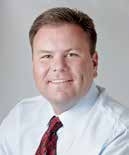
If we’ve learned anything over the last 2+ years amid the pandemic it’s how connected everything in the U.S. healthcare system is. Especially in regard to the supply chain. The disruption of one small part of a critical product further upstream in the supply chain can cause all sorts of problems for health systems and suppliers who are delivering the care.
We’re connected in more ways than one. For instance, the added stress of the pandemic to our nation’s frontline caregivers has been felt across all areas and all facets of our industry. In this issue we explore the topic from several angles. In “A Nursing Shortage and Frayed Workforce” we examine educational opportunities, technology and policies being implemented with the hope of easing the strain on our nursing workforce. Nurses are the largest staffing group in healthcare, and the U.S. is in the midst of a critical nursing shortage. According to a TWC Labor Market analysis, there is a current gap of approximately 20,000 RNs in Texas alone. But demand for all healthcare occupations is expected to grow at a much faster rate than all occupations combined.
Indeed, the last two years has created overload and burnout among our nation’s healthcare workers. I recently spoke with several supply chain leaders to hear how their IDNs are trying to reduce burnout and create a more enjoyable and safer workplace environment. In “Creating Happy and Healthy Environments for Healthcare Workers” they shared some best practices on what their organizations are doing to ease the strain being felt nationwide.
In one example, Ed Hisscock, senior vice president, supply chain at Trinity Health said his organization has created a colleague care team. “We’ve selected some people and they come from all different walks of life. There are some change management experts, there are some folks that are from our HR team with various levels of expertise,” said Hisscock. “Basically, what we’re doing is we are taking colleagues offline. Their full-time role is to interview other colleagues on what’s going on, how they are feeling.” Hisscock says the data they have collected from these interactions is invaluable, allowing Trinity Health to make the necessary tweaks to avoid further caregiver burnout in the future.
It’s encouraging that so much effort is being put forth to protect those who protect us from pandemics, illnesses and more. We’ll continue to shine the spotlight on the heroes of our healthcare system in future issues in the hopes that their stories inspire and provide a few workable solutions to their problems all our hospitals and health systems are facing.
